OSAC Newsletter, January 2017
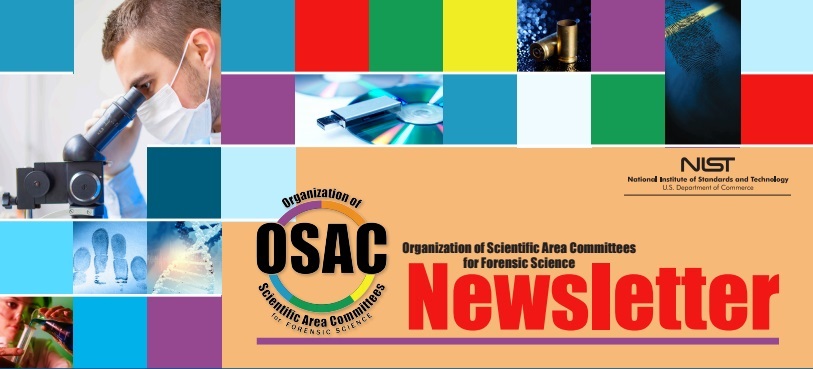
Introducing Scientifically Sound Draft Standards to the Academy Standards Board (ASB) | Message from the OSAC Affairs Director: NIST, OSAC Affairs, and Maryland State Police (MSP) Forensic Science Division Laboratory Staff Discuss Implementation of OSAC Standards and Guidelines | Standards Developing Organization (SDO) News | Status of Standards Documents Recommended for Inclusion on the OSAC Registries | Research & Development Needs | On the Horizon | NIST Activities
January 2017
Introducing Scientifically Sound Draft Standards to the Academy Standards Board (ASB)
By George Herrin, Chair of the Biology/DNA Scientific Area Committee (SAC)
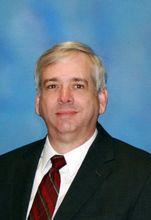
The OSAC Biology/DNA Scientific Area Committee (SAC) has approved four documents for submission to the American Academy of Forensic Science Academy Standards Board (ASB) for consideration as potential standards for laboratories which conduct forensic casework in this discipline.
The two documents from the Data Interpretation and Reporting Subcommittee were the Standard for Validation of Probabilistic Genotyping Systems and the Standard for Verification of Mixture Interpretation Procedures. The two documents from the Wildlife Forensics Subcommittee were the General Standards for Wildlife Forensics and Standards for Morphology and Wildlife Forensics Report Writing Standards. During the development of each draft document, the subcommittees carefully reviewed current laboratory practices, existing research and literature, and existing standards or guidelines that may have relevance to the particular document under development.
The basic scientific principles of documenting the methods and samples used and the utilization of known samples for controlled studies helped define the scientific underpinning for each of the draft standards. The draft standards completed by the subcommittees were then subjected to further review and analysis by forensic laboratory practitioners, research scientists, population geneticists, and statisticians on the SAC prior to final approval for submission of the document to the ASB.
In several cases the wording of specific elements of the early draft standards were modified during this review process to clarify the language and ensure that the requirements of the document met technical merit requirements. The SAC members provided the subcommittee with suggested language where modifications were considered necessary. A specific example of this is in the Reporting Standard for Wildlife Forensics. A sample reporting statement included in the draft was corrected and clarified following input from the population geneticist and statistician. Several statements in the Probabilistic Genotyping Validation document were revised following input from both academic researchers and forensic laboratory practitioners to ensure the requirements were clear and unambiguous. All of the participants in this process have unique and valuable perspectives that provide a stronger and more scientifically rigorous work product for the ASB to consider.
Message from the OSAC Affairs Director: NIST, OSAC Affairs, and Maryland State Police (MSP) Forensic Science Division Laboratory Staff Discuss Implementation of OSAC Standards and Guidelines
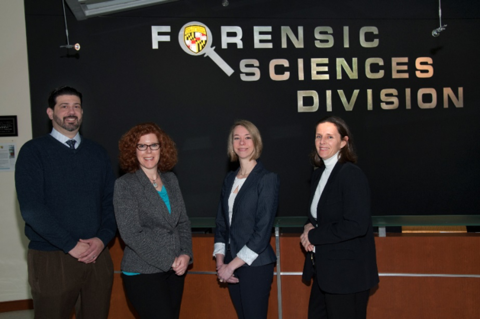
The current OSAC implementation approach identifies multiple pathways to encourage the adoption of the standards/guidelines placed on OSAC registries by the forensic science industry. First, the OSAC was specifically designed to include representatives from major accrediting bodies on its Quality Infrastructure Committee, who would both help to create and promote quality OSAC standards, and to educate stakeholders on the best way to incorporate these standards into future conformity assessments. OSAC is also working directly with federal agencies to influence the adoption of OSAC standards in federal laboratories. In addition to these efforts, OSAC encourages individual laboratories to consider self-adoption of OSAC standards and guidelines into their own laboratory operations. For example, in 2016 the Kentucky State Police (KSP) Drug Chemistry section, following the ISO/IEC 17025 numbering scheme, recently updated its Standard Operating Procedures (SOPs) to incorporate OSAC-endorsed standards. The Georgia Bureau of Investigation Division of Forensic Sciences has also recently incorporated similar language.
The Forensic Science Standards Board (FSSB), at its most recent quarterly meeting on December 1-2 in Decatur, Georgia, created a task group to build a roadmap for these overarching pathways toward standards implementation. This task group will begin to outline the specific activities required to help OSAC execute the implementation of the growing OSAC registry.
NIST is grateful to the MSP for their contribution as members and collaborators to the OSAC program. Other OSAC members and affiliates who are interested in a forensic science laboratory tour in their area can contact their committee chairs to help arrange a tour.
Standards Developing Organization (SDO) News
This section describes SDO activities relevant to OSAC and the forensic science community.
The American Academy of Forensic Science (AAFS) American Standards Board (ASB) Recent Activity
The following document is currently available for public review and comment.
ASB Standard 017, First Edition, 2017
Standard Practices for Measurement Traceability in Forensic Toxicology
Posted on January 10, 2017, comment period closes February 24, 2017.
Please download the template for comments to documents posted for ballot, and return it to asb [at] aafs.org (asb[at]aafs[dot]org) by the close of the comment period.
Notification of Standard Development and Coordination
ASB has announced the preliminary development stage of new documents* in the December 9, 2016 issue of the ANSI Standards Action publication. See page 12 for information on the ASB’s Project Initiation Notification System (PINS).
BSR/ASB Std 019-201x, Wildlife Forensics - General Standards (new standard)
Project Need: The field of wildlife forensics is very diverse and this document will ensure that all laboratories, including academic and research labs, adhere to consistent standards. Following these standards will allow all wildlife forensic labs to appropriately perform testing in the area of wildlife forensic sciences.
This document provides minimum standards and recommendations for practicing wildlife forensic analysts. This document covers good laboratory practices, evidence handling, and training as well as considerations of taxonomy and reference collections that are specific to wildlife forensic science.
ASB has announced the preliminary development stage of new documents* in the December 23, 2016 issue of the ANSI Standards Action publication. See page 12 of that issue for information on the ASB’s Project Initiation Notification System (PINS).
BSR/ASB Std 020-201x, Standards for Validation Studies of DNA Mixtures for the Development and Verification of a Laboratory Mixture Interpretation Protocol (new standard) This standard was designed to provide direction and guidance to laboratories for the development of DNA mixture interpretation protocols that consistently produce reliable and reproducible interpretations and conclusions, which are supported by internal validation data.
[*The submittal of a Project Initiation Notification System (PINS) is required by ANSI for the development, revision, reaffirmation or withdrawal of candidate American National Standards (ANS). These notices are published in ANSI Standards Action. The notice is intended to serve as is an opportunity for deliberation among stakeholders and the opportunity to lodge a claim if there is a concern of conflict or duplication.]
Learn more about the AAFS American Standards Board (ASB) standards development process.
ASTM Committee E30 on Forensic Sciences Recent Activity
The following work items are underway:
E30.12 Digital and Multimedia Evidence
WK57017 Standard Practice/Guide for Facial Recognition Systems: Guidelines for Postmortem Facial Image Capture (LINK EXPIRED)
The following documents have been withdrawn because of inactivity, due to ASTM subcommittee E30.02 being dissolved. The withdrawn documents will be revised in the Forensic Document Examination subcommittee.
E2285-08 Standard Guide for Examination of Mechanical Checkwriter Impressions (Withdrawn 2017)
E2286-08a Standard Guide for Examination of Dry Seal Impressions (Withdrawn 2017)
E2289-08 Standard Guide for Examination of Rubber Stamp Impressions (Withdrawn 2017)
E2494-08 Standard Guide for Examination of Typewritten Items (Withdrawn 2017)
Learn more about ASTM E30.
The aim of the Organization of Scientific Area Committees for Forensic Science (OSAC) is to identify and promote technically sound, consensus-based, fit-for-purpose documentary standards that are based on sound scientific principles. This is achieved through the OSAC Registry. A standard or guideline that is posted on the Registry demonstrates that the methods it contains have been assessed to be valid by forensic practitioners, academic researchers, measurement scientists, and statisticians through a consensus development process that allows participation and comment from all relevant stakeholders.
Below is a listing of standards or guidelines that are under consideration for the OSAC Registry, along with their status in the approval process.
Standards Documents Open for Public Comment
The intent of the public comment period is to collect public opinion on inclusion of the standard to the OSAC Registry (OSAC is not soliciting potential revisions to the documents themselves.)
There is nothing available for Public Comment at this time.
Standards Documents in Public Comment Adjudication Phase
Public comment period is closed for the following standards/guidelines as OSAC units review and adjudicate comments received.
ASTM E2388-11 Standard Guide for Minimum Training Requirements for Forensic Document Examiners (for consideration as an OSAC Standard)
This guide may not cover all aspects of training for the topics addressed or for unusual or uncommon examinations.
ASTM E2451-13 Standard Practice for Preserving Ignitable Liquids and Ignitable Liquid Residue Extracts from Fire Debris Samples (for consideration as an OSAC Guideline)
This practice describes procedures for preserving residues of ignitable liquids in extracts obtained from fire debris samples and questioned ignitable liquid samples.
Standards Documents at SAC for Vote
There are no standards documents at the SAC for vote at this time.
Standards Documents at FSSB for Vote
There are no Standards Documents at the FSSB for Vote at this time.
Standards Documents in the Appeals Phase
The public appeals phase is open for the following standard. Appeals may only be submitted by individuals or groups that submitted a comment during the open public comment phase that believe their comment was not properly adjudicated. Submitted appeals must relate to the comment adjudication process, not technical issues.
ASTM E2548-11e1 Standard Guide for Sampling Seized Drugs for Qualitative and Quantitative Analysis (for consideration as an OSAC Standard)
This guide covers minimum considerations for sampling of seized drugs for qualitative and quantitative analysis.
ISO/IEC 17020:2012 Requirements for the Operation of Various Types of Bodies Performing Inspection (for consideration as an OSAC Standard)
ISO/IEC 17020:2012 specifies requirements for the competence of bodies performing inspection and for the impartiality and consistency of their inspection activities. It applies to inspection bodies of type A, B or C, as defined in ISO/IEC 17020:2012, and it applies to any stage of inspection.
Standards Documents Returned to SDO for Modifications Based on Comments
After careful consideration of the comments from the either the public and/or other OSAC committees, the OSAC has elected to submit the following documents to the SDO for revisions prior to proceeding through the OSAC process. They believe the issues raised during the comment period can be addressed by the SDO, and intend to bring the updated standards back through the OSAC Registry Approval Process.
ASTM E2330-12 Standard Test Method for Determination of Concentrations of Elements in Glass Samples Using Inductively Coupled Plasma Mass Spectrometry (ICP-MS) for Forensic Comparisons (for consideration as an OSAC Standard)
One objective of a forensic glass examination is to compare glass samples to determine if they can be discriminated using their physical, optical or chemical properties (for example, color, refractive index (RI), density, elemental composition). If the samples are distinguishable in any of these observed and measured properties, it may be concluded that they did not originate from the same source of broken glass. If the samples are indistinguishable in all of these observed and measured properties, the possibility that they originated from the same source of glass cannot be eliminated. The use of an elemental analysis method such as inductively coupled plasma mass spectrometry yields high discrimination among sources of glass. This test method covers a procedure for quantitative determination of the concentrations of magnesium (Mg), aluminum (Al), iron (Fe), titanium (Ti), manganese (Mn), rubidium (Rb), strontium (Sr), zirconium (Zr), barium (Ba), lanthanum (La), cerium (Ce), neodymium (Nd), samarium (Sm), and lead (Pb) in glass samples.
ASTM E2926-13 Standard Test Method for Forensic Comparison of Glass Using Micro X-ray Fluorescence (μ-XRF) Spectrometry (for consideration as an OSAC Standard)
This test method is for the determination of major, minor, and trace elements present in glass fragments. The elemental composition of a glass fragment can be measured through the use of μ-XRF analysis for comparisons of glass. This test method covers the application of μ-XRF using mono- and poly- capillary optics, and an energy dispersive X-ray detector (EDS).
ASTM E2881-13e1 Standard Test Method for Extraction and Derivatization of Vegetable Oils and Fats from Fire Debris and Liquid Samples with Analysis by Gas Chromatography-Mass Spectrometry (for consideration as an OSAC Standard)
This test method covers the extraction, derivatization, and identification of fatty acids indicative of vegetable oils and fats in fire debris and liquid samples. This procedure will also extract animal oils and fats, as these are similar in chemical composition to vegetable oils and fats. Herein, the phrase "oils and fats" will be used to refer to both animal and vegetable derived oils and fats. This test method is suitable for successfully extracting oil and fat residues having 8 to 24 carbon atoms.
ASTM E2916-13 Standard Terminology for Digital and Multimedia Evidence Examination (for consideration as an OSAC Guideline)
This document provides standard terminology for the subcommittees of Digital Evidence, Facial Identification, and Video Imaging Technology and Analysis.
ASTM E2825-12 Standard Guide for Forensic Digital Image Processing (for consideration as an OSAC Standard)
This document provides digital image processing guidelines to ensure the production of quality forensic imagery for use as evidence in a court of law. It briefly describes advantages, disadvantages, and potential limitations of each major digital imaging process.
ASTM E1610-14 Standard Guide for Forensic Paint Analysis and Comparison (for consideration as an OSAC Guideline)
This guide is designed to assist the forensic paint examiner in selecting and organizing an analytical scheme for identifying and comparing paints and coatings. The size and condition of the sample(s) will influence the selected analytical scheme.
ASTM E2937-13 Standard Guide for Using Infrared Spectroscopy in Forensic Paint Examinations (for consideration as an OSAC Guideline)
This guide applies to the forensic IR analysis of paints and coatings and is intended to supplement information presented in the Forensic Paint Analysis and Comparison Guidelines written by Scientific Working Group on Materials Analysis (SWGMAT). This guideline is limited to the discussion of Fourier Transform Infrared (FTIR) instruments and provides information on FTIR instrument setup, performance assessment, sample preparation, analysis and data interpretation.
The status of standards documents that are under consideration for the OSAC Registry can also be found on the Status of Standards Documents OSAC webpage.
One of the OSAC's activities is to inform the forensic science community of research needs that are uncovered during the OSAC's standards development activities. These research needs recommendations may be considered by other agencies and organizations when they develop their own agency research needs, and when soliciting funding for forensic science research.

The Bloodstain Pattern Analysis Subcommittee has two Research and Development Needs and two addendums to contribute.
Bloodstain Pattern Classification
- Addendum to Bloodstain Pattern Classification
Examiner Reliability Study: Black and White Box Studies on Bloodstain Pattern Analysts
- Addendum to Examiner Reliability Study: Black and White Box Studies on Bloodstain Pattern Analysts
Research & Development Needs can be found in greater detail on the NIST OSAC Research and Development Needs webpage.
On the Horizon
This section describes public and internal OSAC meetings that are on the horizon.

•(Open to the Public) Feb. 13-14 OSAC Public Meeting, New Orleans, LA
February 13, 2017 (Monday)
• Digital/Multimedia Scientific Area Committee (SAC) Public Status Reports & Open Discussion
• SAC Introduction
• Digital Evidence Subcommittee presentation/discussion
• Facial Identification Subcommittee presentation/discussion
• Video/Imaging Technology and Analysis Subcommittee presentation/discussion
• Speaker Recognition Subcommittee presentation/discussion
• Biology/DNA SAC Public Status Reports & Open Discussion
• SAC Introduction
• Biological Methods Subcommittee presentation/discussion
• Biological Data Interpretation and Reporting Subcommittee presentation/discussion
• Wildlife Forensics Subcommittee presentation/discussion
• Crime Scene/Death Investigation SAC Public Status Reports & Open Discussion
• SAC Introduction
• Anthropology Subcommittee presentation/discussion
• Crime Scene Investigation Subcommittee presentation/discussion
• Disaster Victim Identification Subcommittee presentation/discussion
• Dogs and Sensors Subcommittee presentation/discussion
• Fire and Explosion Investigation Subcommittee presentation/discussion
• Medicolegal Death Investigation Subcommittee presentation/discussion
• Odontology Subcommittee presentation/discussion
February 14, 2017 (Tuesday)
• Physics/Pattern Interpretation SAC Public Status Reports & Open Discussion
• SAC Introduction
• Bloodstain Pattern Analysis Subcommittee presentation/discussion
• Firearms and Toolmarks Subcommittee presentation/discussion
• Footwear and Tire Subcommittee presentation/discussion
• Forensic Document Examination Subcommittee presentation/discussion
• Friction Ridge Subcommittee presentation/discussion
• Chemistry/Instrumental Analysis Scientific Area Committee Public Status Reports & Open Discussion
• SAC Introduction
• Fire Debris and Explosives Subcommittee presentation/discussion
• Geological Materials Subcommittee presentation/discussion
• Gunshot Residue Subcommittee presentation/discussion
• Materials (Trace) Subcommittee presentation/discussion
• Seized Drugs Subcommittee presentation/discussion
• Toxicology Subcommittee presentation/discussion
•(Internal OSAC Meeting) March 16-17, 2017 FSSB meeting (Dulles, VA)
•(Internal OSAC Meeting) April 18-21, 2017 Full OSAC meeting (Leesburg, VA)
•(Internal OSAC Meeting) June 1-2, 2017 FSSB meeting, location to be determined
•(Internal OSAC Meeting) Fall OSAC Meetings, September 25-29, 2017, location to be determined: SAC + Resource Committees, September 25-16; OLSS 2.0 Meeting (FSSB + 24 Subcommittee Chairs), September 27; FSSB Meeting, September 28-29
NIST Activities
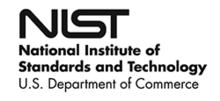
This section details other activities at NIST that may be of interest to OSAC stakeholders.
NIST Research Enables Enhanced DNA “Fingerprints”

Database of Software “Fingerprints” Expands to Include Mobile Apps
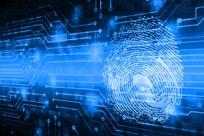
NIST’s National Software Reference Library, an essential tool for digital forensic investigators, is about to become a lot more powerful.

